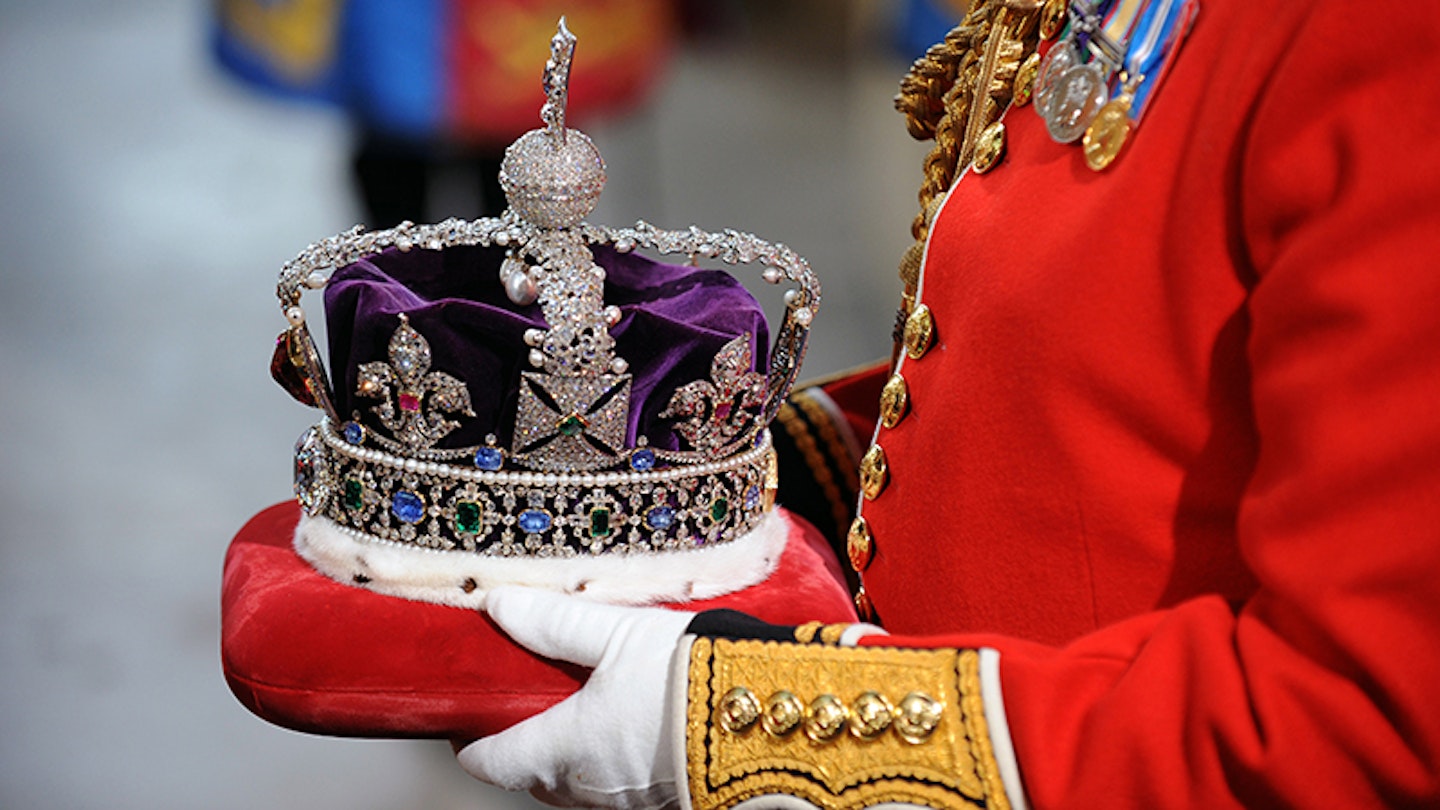The Crown Jewels are the ceremonial treasures which have been acquired by English kings and queens since 1660 or earlier. Made up of a host of extraordinary items – from orbs, sceptres and crowns, to gold and silver-gilt banqueting and altar plate, the Crown Jewels are part of the national heritage and are now held by His Majesty King Charles III as Sovereign.
Their long history, spanning almost a thousand years, and their continued ceremonial use in the Coronation Service and at the State Opening of Parliament mean to this day they are intimately connected with the status and role of the monarch.
Saturday 6 May will be King Charles' Coronation and if you're curious about which Crown Jewels will be making an appearance, we're here to fill you in on all the details.
What crown will King Charles wear?
St. Edward's Crown
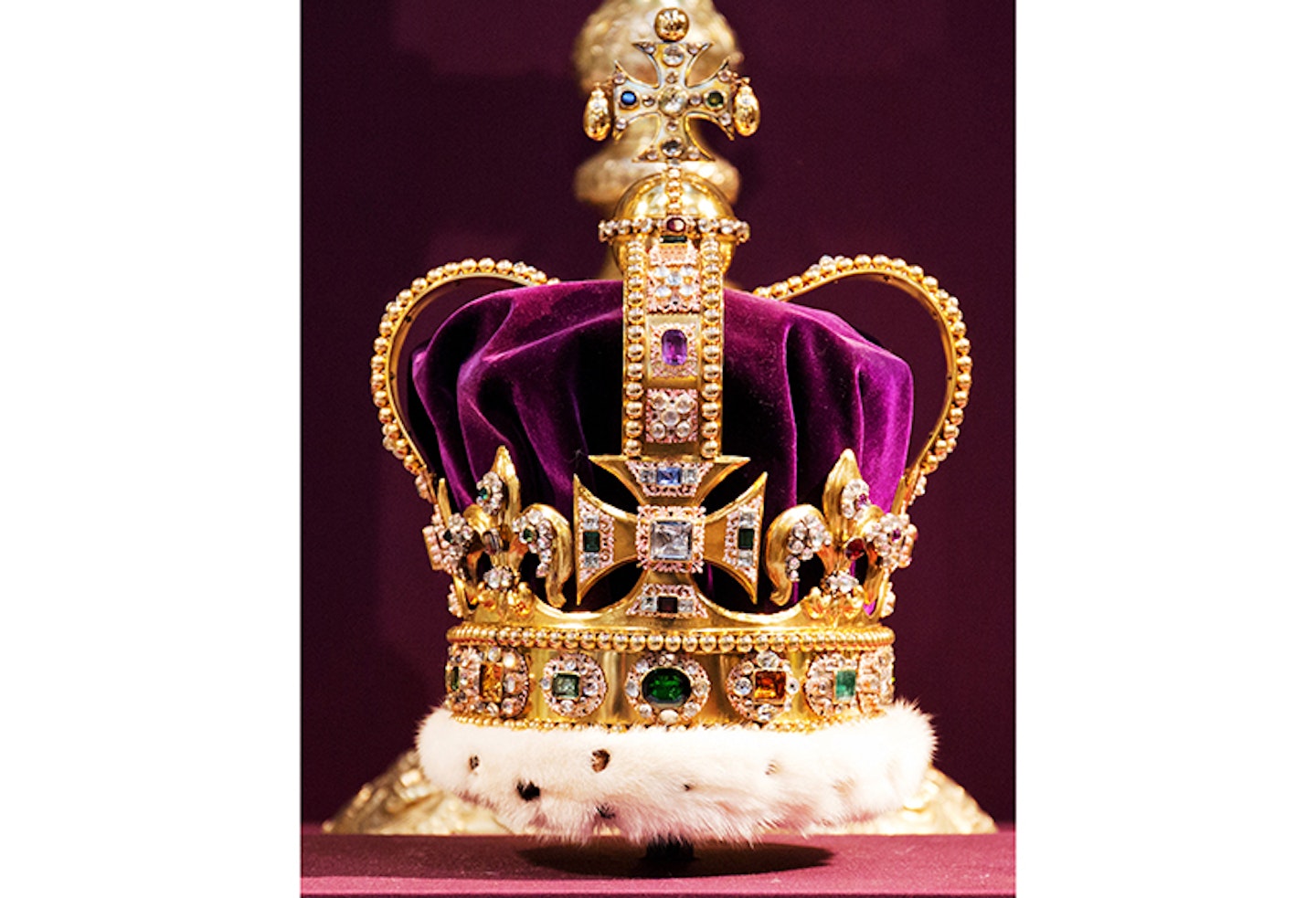
One of the most important pieces in the Crown Jewels is St. Edward’s Crown. It leaves the Tower of London only for coronation ceremonies and was last used in 1953 to crown a young Queen Elizabeth. Charles II commissioned the crown in 1661.

Keeping with tradition, King Charles III will wear the St. Edward's Crown when he is officially declared as the King during his Coronation. The first and only time that he will wear this particular crown.
It is made of solid gold set with more than 444 precious and semi-precious stones, an ermine trim, and a diamond-set cross atop a sphere at the intersection of four arches. Due to its weight (an enormous 2.23kg), it is only worn very briefly.
It was recently announced that St Edward's Crown has been removed from the Tower of London to allow for modification work ahead of the Coronation.
Imperial State Crown
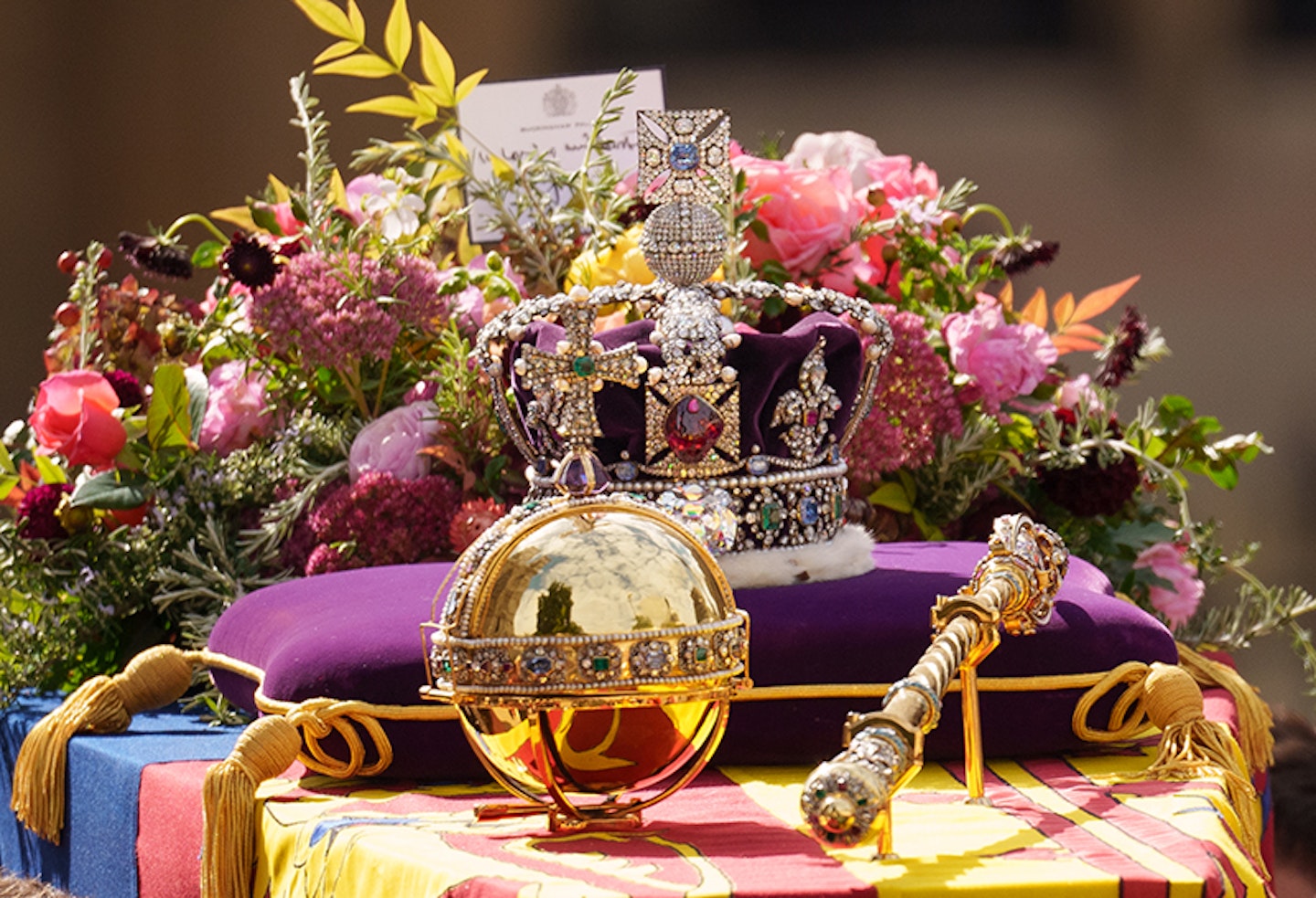
King Charles will also wear the Imperial State Crown during the Coronation service.
Perhaps the most familiar treasure in the Crown Jewels, the Imperial State Crown sat atop Queen Elizabeth II's coffin when she was lying in state, and during the procession for her funeral.
It was the same crown she wore to exit Westminster Abbey after The Queen's coronation, as well as annually for the ceremony of the State Opening of Parliament.
The crown sparkles with nearly 3,000 stones - including 2,868 diamonds, 273 pearls, 17 sapphires, 11 emeralds, and five rubies. One of the most dazzling stones is the 317-carat Cullinan II diamond, cut from the largest diamond ever found and gifted to Edward VII for his 66th birthday (the larger Cullian I forms part of the sceptre).
As well as the jewels, the King will also be dressed in two separate golden robes worn by previous monarchs at their coronations. Firstly, during the crowning, he will be wearing a supertunica which is a long-sleeved golden coat which weighs 2kg. This coat was first made for his great-grandfather King George V in 1911 and later worn by his mother.
The floor-length cloak, also known as the imperial mantle will then be placed on King Charles by his son, the Prince of Wales. This cloak weighs around 3-4kg and on top of the already 2kg supertunica along with the 2.2kg St Edward's Crown, things will be rather heavy.
Which Crown Jewels will be used at King Charles' coronation?
The Coronation Ring
The Wedding Ring of England is placed on the fourth finger of the monarch’s right hand. It was made for the Coronation of King William IV in 1831 and has been worn at every Coronation since then, except Queen Victoria’s as her fingers were so small that an alternative was made.
The Sovereign’s Sceptre with Cross
Used at every Coronation since Charles II's in 1661, The Sovereign’s Sceptre with Cross was transformed for George V by adding the Cullinan I diamond - the largest colourless cut diamond in the world. The sceptre symbolises the Crown’s power and governance.
During the coronation, the Sceptre with Cross is passed to the monarch’s right hand by the Archbishop of Canterbury.
The Sovereign’s Sceptre with Dove
The Sceptre with Dove is passed into the monarch’s left hand. Set with 285 gems, the golden sceptre features the emblem of a dove with outstretched wings, symbolising equity and mercy.
The Sovereign's Orb
This golden globe is surmounted by a cross and studded with hundreds of precious stones – which is a reminder that the monarch’s power is granted by God.
The Sword of Offering
The Archbishop blesses the Sword of Offering and then presents it to the monarch. It represents strength and power and was originally made for King George IV back in 1820. It is decorated on both faces with the national emblems (roses, thistles and shamrocks) and densely set with diamonds, ruby-set eyes, a rectangular quillon block and a large central emerald on each side.
Ampulla and spoon
Believed to be the most important objects of the coronation, the ampulla and spoon are required for the anointing, the most sacred part of the coronation service.
First made for the coronation of King Charles II in 1661 and shaped like an eagle, the ampulla holds the consecrated oil with which the monarch is anointed.
The spoon is the only item to survive Oliver Cromwell’s destruction of the sacred symbols of the monarchy following the English Civil War, dating back to the early 12th century.
The Spurs
First included in 1189, at the coronation of Richard I, the spurs were traditionally fastened to the sovereign's feet, but since the Restoration, they are now simply held to the ankles of kings, or in the case of queens regnant, presented and then placed on the altar.
Will Camilla wear any Crown Jewels at the coronation?
Camilla, Queen Consort will wear a modified version of Queen Mary’s crown, made for the 1911 coronation and commissioned by Queen Mary, the consort of George V.
In a touching tribute to Queen Elizabeth II, the crown will be reset with the Cullinan III, IV and V diamonds, part of the late queen’s personal jewellery collection, which was often worn by her as brooches.
The modified crown will not feature the Koh-i-Noor diamond due to the circumstances in which it was acquired, and what it has come to symbolise.
In a statement, Buckingham Palace said: "The choice of Queen Mary’s crown by her majesty is the first time in recent history that an existing crown will be used for the coronation of a consort instead of a new commission being made, in the interests of sustainability and efficiency."
Facts about the Crown Jewels
1 At the end of the English Civil War in 1649 the Council of State ordered the Crown Jewels be destroyed. Almost all the pieces used for the coronation of King Charles I were taken to the Mint within the Tower of London and melted down. They re-emerged as coinage, used to pay the army that had defeated the king.
2 In 1660 Charles II restored to the throne of England and Scotland. Only five items from the original Crown Jewels could be found intact. These were three swords, a silver spoon and The Coronation Chair. Metal recovered from the old Saint Edward’s Crown was hastily incorporated into a new crown for the coronation of Charles II. This crown, still known as St. Edward's Crown is used in modern coronations.
3 The Crown Jewels were stolen from the Jewel House in 1672. The thieves were disturbed during the crime and wrestled to the ground on the Tower wharf, with the crown, orb and sceptre hidden under their cloaks. After being repaired the jewels were returned to the Tower and kept safely behind bars.
4 From the reign of Anne (crowned in 1702) until the early twentieth century, it was quite usual for the regalia to be set with jewels hired for the coronation only.
5 The Scottish Crown Jewels, housed in Edinburgh castle, are known as "The Honours of Scotland". The Scottish Crown Jewels were left in Scotland when King James VI of Scotland inherited the English throne. They are the oldest sovereign regalia in the British Isles. The crown, the sword and sceptre date from the late 15th and early 16th century.
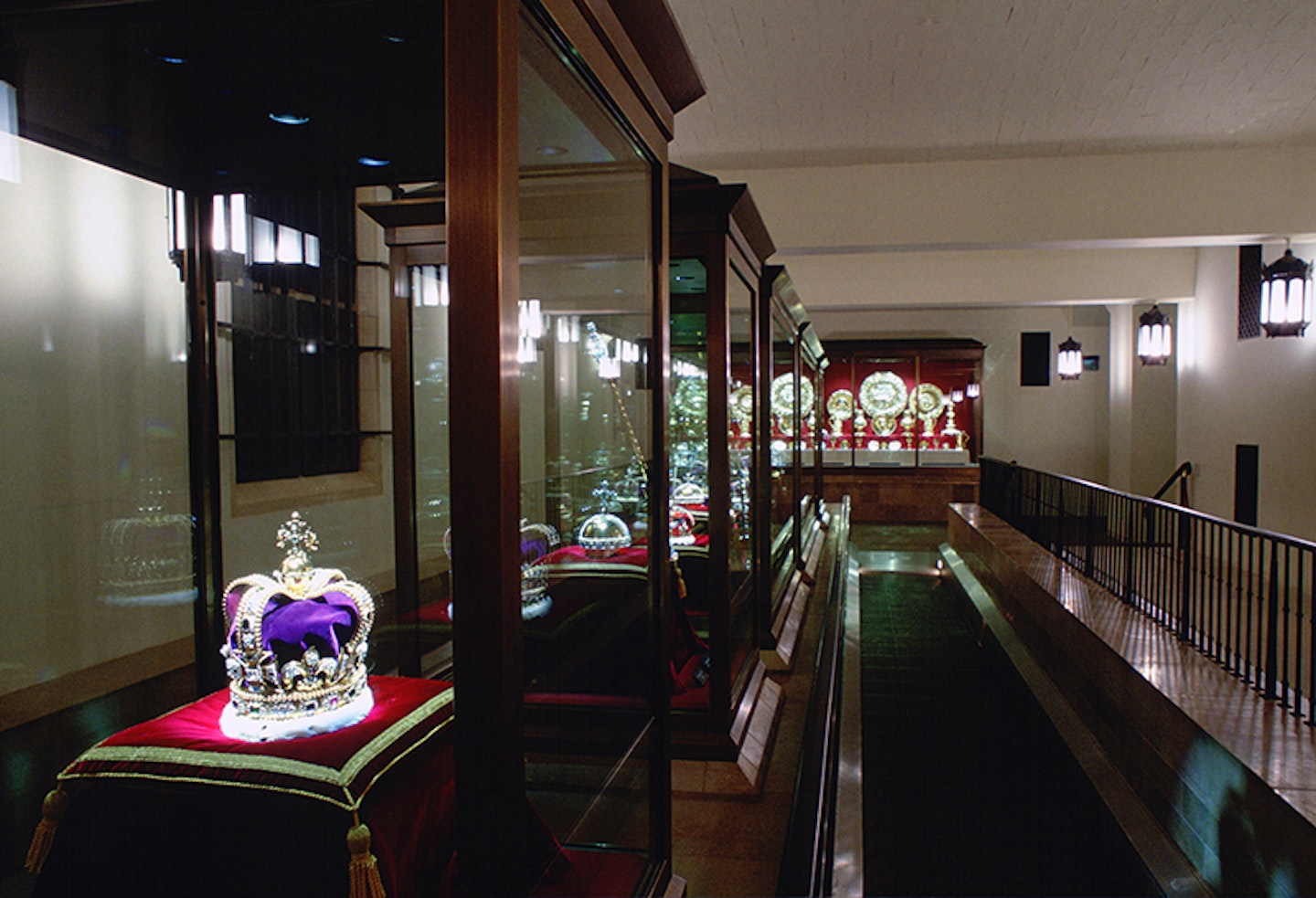
6 Made in 1937 for the coronation of the Queen's father, King George VI, the Imperial State Crown was designed to be lighter, and to fit better, than the crown it replaced - which dated back to Queen Victoria. But nevertheless, the Imperial Crown still weighs in at a hefty 2.3lbs (1.06kg).
7 The large red gemstone in the Imperial State Crown is known as the Black Prince's Ruby. It is thought to have been worn in 1415 during the Hundred Years' War by Henry V at the Battle of Agincourt - when English forces beat the French to the south of Calais. Legend has it that the king placed a feather in a hole drilled into the ruby.
8 The oldest gem in the royal collection is the sapphire set at the centre of the cross on the Imperial Crown. It's said to have once been worn in a ring by the 11th Century king of England, St Edward the Confessor.
9 While the Crown Jewels are considered priceless due to their historic and cultural value, various experts have attempted to unofficially value them, coming up with estimates of between £3 billion and £5 billion. However, there are no official valuations.
10 Britain is the only European monarchy still using its regalia for the consecration ceremony of crowning the Sovereign.
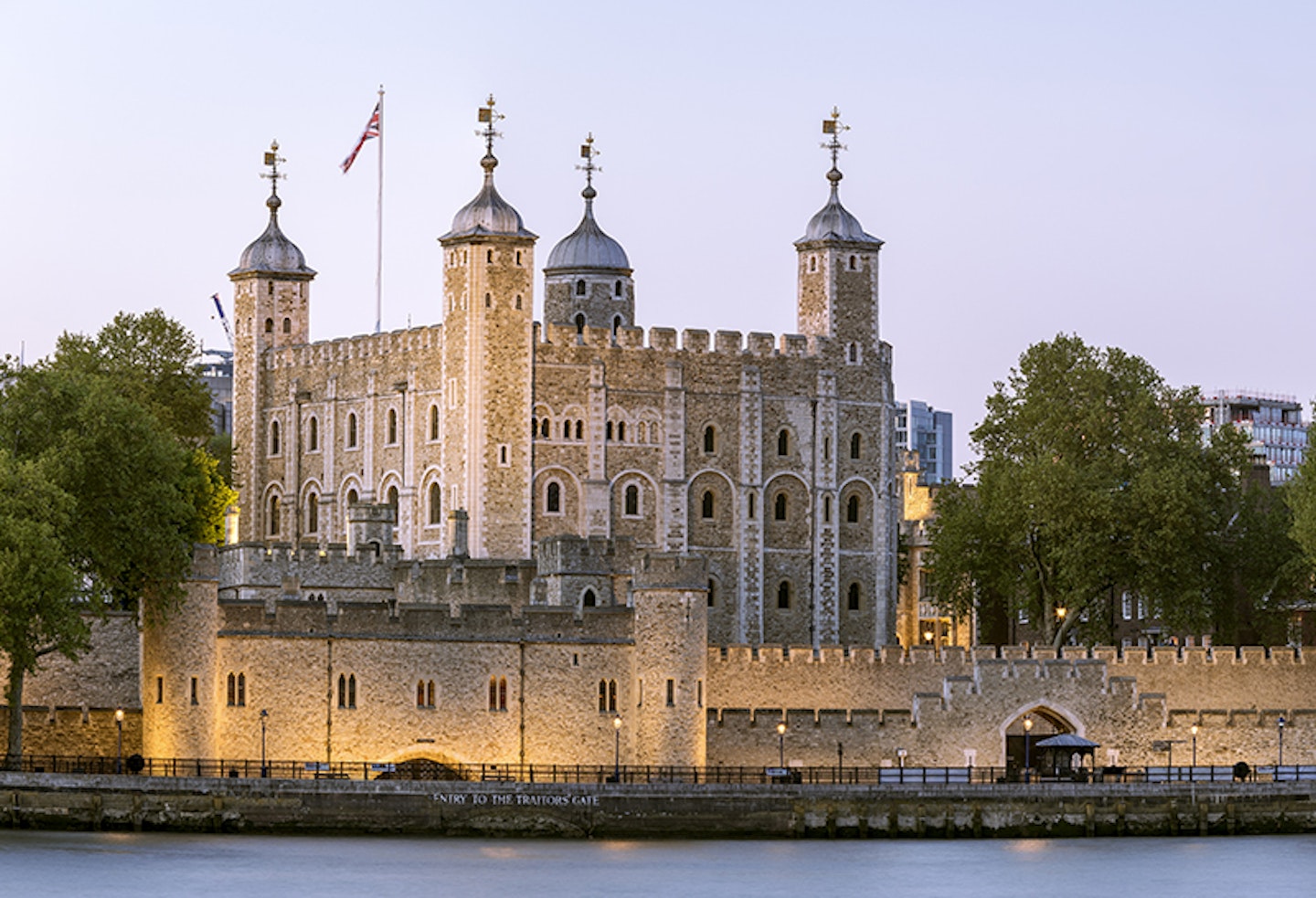
11 Although the Crown Jewels are famously kept at the Tower of London (and have been for 800 years), during the Second World War the jewels were hidden in a secret location which has never been disclosed.
12 The processional regalia, used during the monarch's coronation, include two of the Royal maces, three swords (representing Mercy, Spiritual Justice and Temporal Justice), the Great Sword of State (symbolising the Sovereign's Royal authority) and St Edward's Staff (dating from 1661).
13 Only three people in the world are allowed to touch the Crown Jewels: the current monarch, the Archbishop of Canterbury and the crown jeweller.
14 The enormous uncut Cullinan diamond was discovered in South Africa in 1905 and cut into a number of large and small faceted diamonds The largest, known as Cullinan I or Great Star of Africa is still the world’s largest top-quality white cut diamond at 530.2 carats. In 1910 this magnificent diamond was set into The Sovereign’s Sceptre with Cross, used in the last part of the Investiture, before crowning.
15 Delhi Durbar – The Imperial Crown of India, was created for George V to wear for his coronation in Durbur, as the Crown Jewels are not permitted to leave the United Kingdom. The crown has never been worn again.
Is the Coronation Chair still used?
Sitting in St George’s Chapel, the Coronation Chair has been the centrepiece of coronations for over 700 years. It was made on the orders of Edward I, who reigned from 1272 to 1307. The chair has been through a lot in its time including graffiti in the 18th and 19th Century and damage in a bomb attack in 1914.
During coronations, it is placed in the centre of Westminster Abbey, in front of the High Altar.
The medieval chair is currently undergoing conservation work, ready for the crowning of King Charles III.
